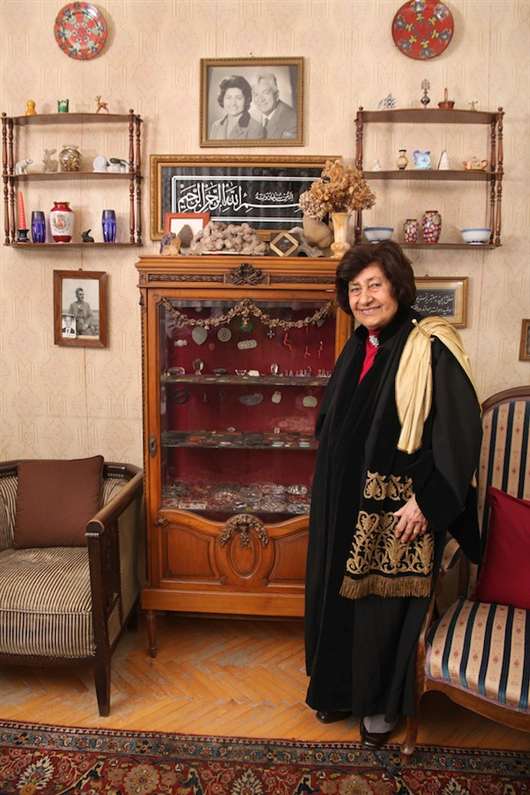Prof.Dr. Cazibe Arıç Sayar

C Sayar, L.R.M. Cocks - Geological Magazine / FirstView Article, pp 1-18, Cambridge Univ Press, 2012.
Late Ordovician fossils, including the distinctive Hirnantia brachiopod Fauna, have been found in Lower Palaeozoic successions in Istanbul and Bolu (Yığılca), western Pontides, NW Turkey. The Middle Ordovician (Sandbian) faunas belong to the cooler-water Mediterranean Province, and they are followed by Katian brachiopods including Sulevorthis, Nicolella, Hesperorthis, Glyptorthis, Saukrodictya and Kullervo and ostracods such as Piretella, Eochilina and Klimphores, which represent deposition in warmer waters; however, the Mediterranean Province usually cooler-water brachiopods Drabovia and Leptestiina also occur. The Pendik Formation includes thin bryozoan-rich limestones which probably represent the Boda Global Warming Event. The overlying turbidites contain a Hirnantia Fauna, developed within a brachiopod–diplograptid association. Above them there are characteristic Llandovery (Rhuddanian–Aeronian) brachiopods, such as Leangella, Eoplectodonta, Stricklandia and Hindella with the corals Halysites, Paleofavosites and Streptelasma. In the Bolu area, Katian brachiopods such as Mcewanella, Dalmanella, Glyptorthis, Christiania, Oligorhynchia, Nicolella, Howellites and Drabovinella also occur, but there the overlying Hirnantia Fauna is developed within a Hirnantia–Mucronaspis association. The fauna and sediments indicate that the western Pontides were not very cold during the latest Ordovician. Despite Turkey being placed in higher latitudes by previous authors, it seems more probable that the Pontides were at somewhat lower palaeolatitudes, perhaps at about 40°S in those times; however, the precise palaeogeographical position of the terrane remains uncertain: there are no Hirnantian glaciogenic rocks there, such as are found in the Taurides of southern Turkey.
C Sayar - Geological Magazine, Cambridge Univ Press, 1964.
Four species of Exoconularia, including E. istanbulensis, sp. now, and one
Archaeoconularia, are recorded from beds hitherto regarded as Silurian, but which are now
shown to be of Middle Ordovician age. A revised stratigraphical succession is proposed.
Alıntılanma sayısı: 5
C Sayar, R. Schallreuter, Neues Jahrbuch für Geologie und Paläontologie, 101-102. 1989.
Kitaplar:
C Sayar - İTÜ Yayınları, 1992
C Sayar - İTÜ Yayınları, 1991
C Sayar - İTÜ Yayınları, 1986
M. Sayar, C. Arıç - İTÜ Yayınları, 1962
Bildiriler:
Istanbul ve çevresi Neojen çökelleri ve Paratetis içindeki konumu
C Sayar - Maden Fakultesi, 1987
Alıntılanma sayısı: 5
C. Sayar, Türkiye Jeoloji Kurumu Bülteni, C- 27, 99 -109, Ağustos, 1984
The geology of the Golden Horn (Haliç) and surrounding region
C Sayar - Bosphorus University, National Symposium on the …, 1976
Alıntılanma sayısı: 5
Haliç ve Civarının Jeolojisi
C Sayar - BÜ, İstanbul. Haliç Sorunları Ve Çözüm Yolları Ulusal …, 1976
Alıntılanma sayısı: 7
New observations in the Paleozoic sequence of the Bosphorus and adjoining areas, Istanbul
C Sayar - Turkey. Sympos. Silur/Devon-Grenze, Bonn, 1962
Alıntılanma sayısı: 3
C. Sayar, İstanbul Teknik Ünüversitesi i.e. Üniversitesi, Hidrojeoloji Enstitüsü Yayınları No 6, 1960
İstanbul Yeni İskân Yöreleri Geoteknik ve Sismik Etüdü
İmar ve İskân Bakanlığı, Büyük İstanbul Nazım Plan Bürosu, Semih S. Tezcan, Turan Durgunoğlu, Yalçın Acar, Tamer Ayan, Murat Belen, Ahmet Çivi, Tufan Durgunoğlu, Cazibe Sayar, Bahtiyar Tunca, Ahmet Ünal, Tayfur Vardar,
Rsch. 03 İT, 22.08.1977
Graptholite Working Group
Bitmeyen Tutku: Jeoloji
Maden Fakültesi'nde Kadınlar: 1953'ten Günümüze